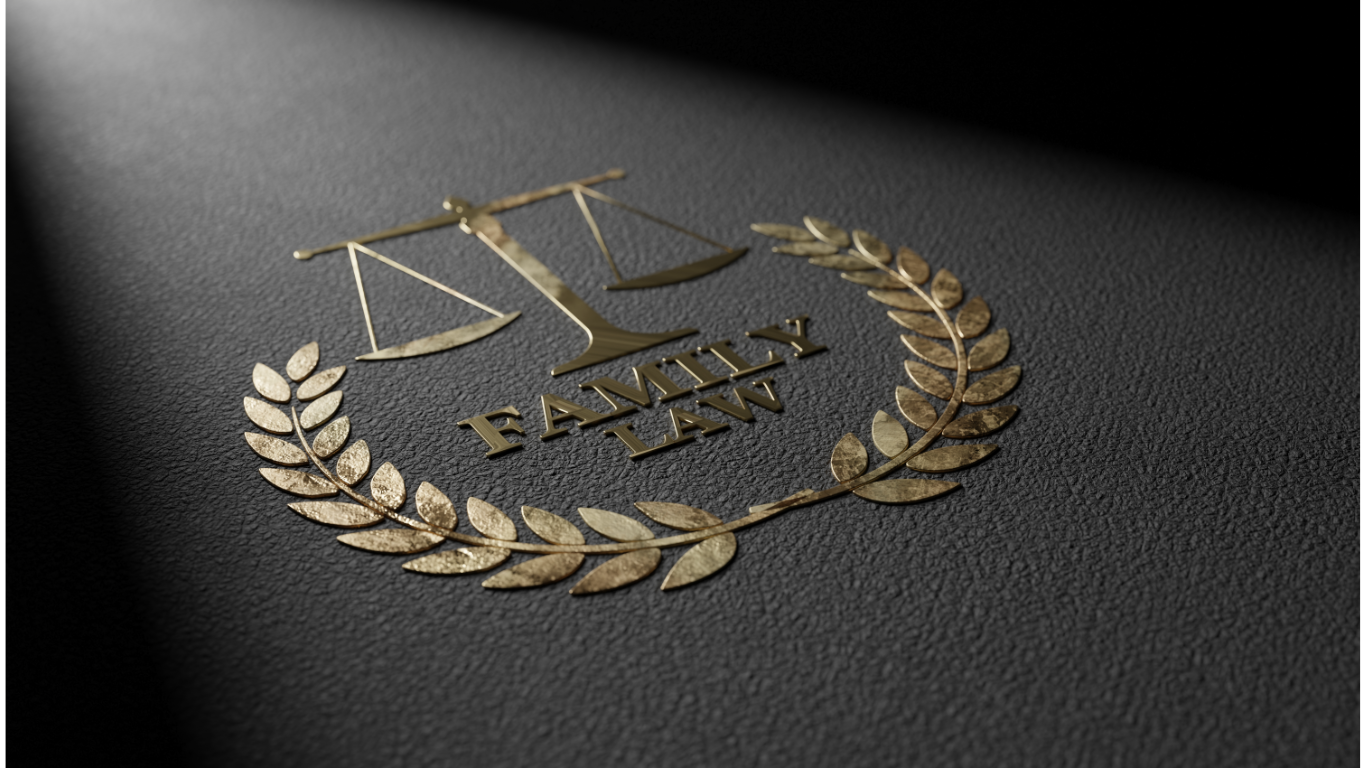A law firm’s logo is more than just a visual representation; it is a powerful tool that can shape the firm’s identity and leave a lasting impression on clients and the legal community. In the competitive legal landscape, a well-designed logo not only conveys professionalism but also builds trust and credibility. In this insightful blog, we will delve into the pivotal role that a law firm’s logo plays in establishing a robust and distinctive identity within the fiercely competitive legal arena.
Key Elements of a Successful Law Firm Logo
The key elements include considerations related to simplicity, relevance to the legal profession, and memorability, as well as thoughtful choices in typography, font selection, and color palette.
Simplicity and Clarity
When it comes to law firm logos, simplicity reigns supreme. A cluttered or overly complex design can be distracting and may not effectively communicate the firm’s essence. A clean and straightforward logo ensures that clients can easily recognize and remember it. Consider iconic law firms like Baker McKenzie or Skadden – their logos are simple, yet they resonate powerfully in the minds of clients.
Avoid unnecessary elements that may dilute the impact of the logo. Remember, simplicity does not mean blandness. Strive for a design that encapsulates the firm’s identity succinctly without overwhelming the viewer.
Relevance to Legal Profession
A law firm’s logo should unmistakably convey its connection to the legal profession. Integrate symbols and icons that are synonymous with law, such as gavels, scales of justice, or pillars. These symbols instantly communicate the firm’s focus and expertise.
Color choices play a crucial role in establishing this relevance. Opt for colors associated with professionalism and trust, such as deep blues, blacks, or grays. A well-thought-out color palette adds to the logo’s gravitas and reinforces the firm’s commitment to legal excellence.
Remember, the goal is to create a logo that not only represents the firm but also distinguishes it from competitors. Striking the right balance between simplicity and relevance sets the foundation for an impactful law firm logo.
Incorporating Legal Symbols and Icons
A powerful law firm logo seamlessly integrates symbols and icons associated with the legal profession. Gavels, scales of justice, columns, or even the Lady Justice figure are iconic symbols that immediately connect with the practice of law. When incorporating these elements, strive for a design that is both timeless and modern, ensuring that the logo remains relevant as design trends evolve.
Consider the logo of White & Case, which subtly incorporates pillars, creating a sense of strength and stability. The use of such symbols not only communicates the firm’s legal focus but also adds a touch of tradition and authority.
Choosing Colors that Convey Professionalism
Color psychology plays a crucial role in logo design, and for law firms, selecting the right colors is paramount. Professionalism, trust, and authority are qualities that clients seek in legal representation. Opt for a color palette that reflects these values. Deep blues, blacks, and grays are classic choices that exude sophistication and reliability.
Take, for example, the logo of Jones Day, where a deep blue color is complemented by a touch of gold. The combination conveys a sense of trustworthiness and excellence. When choosing colors, it’s essential to consider cultural associations as well. Different cultures may attribute varying meanings to colors, so understanding the target audience is key to effective color selection.
Creating a Unique and Memorable Logo
In a sea of law firms, standing out is imperative. A memorable logo is one that is unique, distinctive, and instantly recognizable. Strive for originality, avoiding clichés or generic designs that might get lost in the crowd. Conduct thorough research to ensure that your logo is not inadvertently similar to competitors.
The logo of Dentons, with its distinctive globe design, is a prime example of uniqueness. The memorable visual element sets the firm apart, making it easily identifiable in a global context. Whether through a unique symbol, font choice, or overall design concept, make sure your logo leaves a lasting impression.
How a Distinctive Logo Aids in Brand Recall
Brand recall is the ability of clients to remember and recognize your law firm amidst a myriad of choices. A distinctive logo significantly contributes to this recall. When clients can easily recall your logo, it fosters a sense of familiarity and trust.
Consider the logo of Clifford Chance – its simple yet distinctive design featuring interlocking letters forms a memorable visual identity. This kind of logo aids in instant recognition and strengthens the firm’s brand image over time.
Typography and Font Selection
The selection often revolves around the choice between serif and sans-serif fonts, each carrying its own connotations. Serif fonts, with their decorative strokes, often evoke a sense of tradition and formality, aligning well with the professionalism associated with the legal field.
Serif vs. Sans-serif Fonts
- Selecting the right font is a critical aspect of law firm logo design, as it conveys the firm’s character and professionalism. When it comes to typography, the choice often boils down to serif and sans-serif fonts.
- Serif Fonts: These fonts feature small decorative lines or strokes at the ends of characters. Serif fonts, such as Times New Roman, evoke a traditional and formal feel. They are often associated with authority and professionalism, making them a suitable choice for law firms aiming to convey a sense of tradition.
- Sans-serif Fonts: In contrast, Sans-serif fonts, like Arial or Helvetica, lack these decorative lines. They are known for their clean modern appearance. Sans-serif fonts communicate a sense of simplicity and are often chosen by law firms seeking a more contemporary and approachable image.
- The choice between serif and sans-serif fonts depends on the firm’s brand personality and the message it wishes to convey. Combining the right font with other design elements contributes to the overall visual impact of the logo.
Legibility Considerations
- Regardless of the font style chosen, legibility is non-negotiable for a law firm logo. The logo must be easily readable across various sizes and formats, ensuring that it remains clear whether displayed on a business card or a billboard.
- Factors affecting legibility include font size, spacing between characters, and the overall design layout. Testing the logo in different contexts and sizes during the design process helps identify and address any potential legibility issues.
- A well-balanced combination of font style and legibility enhances the professionalism and effectiveness of a law firm logo.
Incorporating Law-related Symbols
- Incorporating legal symbols into a law firm logo reinforces the firm’s identity and mission. Symbols like the gavel, scales of justice, and pillars carry a rich association with the legal profession. When used thoughtfully, they can convey the firm’s commitment to justice, fairness, and legal expertise.
- Choose symbols that align with the firm’s values and areas of specialization. For example, a firm focused on criminal law might emphasize the gavel or scales of justice, while a firm specializing in real estate law might incorporate pillars or columns.
- While traditional symbols are powerful, creativity in their integration can make the logo truly stand out. Consider abstract or stylized versions of legal symbols to add a modern touch while maintaining the connection to the profession.
- For instance, the logo of Hogan Lovells features an abstract depiction of pillars, giving a contemporary twist to a classic legal symbol. Experimenting with different design elements allows the firm to create a logo that is not only visually appealing but also rich in symbolism.
Adaptability and Scalability
- A successful law firm logo must be versatile enough to maintain its impact across different mediums. Whether it’s on a business card, a law firm website, or branded merchandise, the logo should remain clear and visually appealing. Consider the following:
- Scalability: Test the logo’s scalability by resizing it to ensure it remains legible and retains its visual appeal. A logo that is too intricate may lose its details when scaled down, leading to a loss of impact.
- Detail Versus Simplicity: Strike a balance between detail and simplicity. While intricate details may be captivating in larger formats, they can become muddled in smaller sizes. Opt for a design that retains its essence even when reduced.
Maintaining Clarity When Reproduced in Black and White
- Law firm logos are often reproduced in black and white, especially in legal documents, contracts, or grayscale publications. It is crucial to ensure that the logo maintains clarity and recognizability without the use of color. Consider:
- Contrast: Ensure that there is enough contrast between elements in the logo, allowing it to stand out in black and white. This may involve adjusting shades and tones to preserve the hierarchy of design elements.
- Outline and Silhouette: A well-designed logo should have a strong silhouette. This ensures that even in the absence of color, the logo’s form remains distinct and recognizable.
Common Mistakes to Avoid
By exploring mistakes such as overcomplicating the design, lack of originality, scalability issues, and inappropriate use of fonts and colors, this portion of the blog offers valuable insights to help law firms navigate potential challenges
Overcomplicating the Design
One of the most common pitfalls in law firm logo design is overcomplicating the design. While it’s essential to convey the firm’s values and identity, an overly intricate logo can lead to confusion and hinder memorability. Simple, clean designs often leave a more lasting impression and are more versatile across various mediums.
Lack of Originality
A generic or unoriginal logo can dilute a law firm’s brand identity. Using clichéd legal symbols without a unique twist may make the logo indistinguishable from competitors. Strive for originality and creativity, ensuring that your logo stands out and communicates the distinctive qualities of your firm.
Ignoring Scalability Issues
Neglecting scalability issues can result in a logo that loses its impact when resized. It’s crucial to test the logo at different sizes to ensure that all elements remain clear and legible. Failing to address scalability can lead to a lack of recognition in smaller formats, impacting the logo’s effectiveness.
Inappropriate Use of Fonts and Colors
Choosing the wrong fonts or colors can undermine the professionalism and credibility of a law firm. Fonts that are difficult to read or colors that are overly bright may convey the wrong message. Ensure that the chosen fonts and colors align with the firm’s values, target audience, and intended message.
Summing Up
Designing a successful law firm logo is a crucial step in establishing a strong brand presence. To create a logo that resonates with clients and reinforces the firm’s professionalism, consider the following key tips:
- Simplicity is key: Keep the design clean and straightforward to enhance recognition and memorability.
- Relevance to the Legal Profession: Incorporate legal symbols and choose colors that convey professionalism and trust.
- Memorability: Strive for a unique design that aids in brand recall, setting your firm apart from the competition.
- Typography and Font Selection: Choose fonts that align with your firm’s personality, considering the balance between serif and sans-serif styles. Ensure legibility across various sizes.
- Incorporating Legal Symbols: Utilize symbols such as gavels, scales of justice, or pillars creatively to reinforce the firm’s identity.
- Adaptability and Scalability: Test the logo in different mediums, ensuring it remains clear in various sizes and maintains clarity in black and white reproductions.
- Avoid Common Mistakes: Steer clear of overcomplicating the design, lack of originality, scalability issues, and inappropriate use of fonts and colors.
- Consider Professional Design: Evaluate the pros and cons of hiring a professional designer versus a DIY approach based on the firm’s budget and needs.




